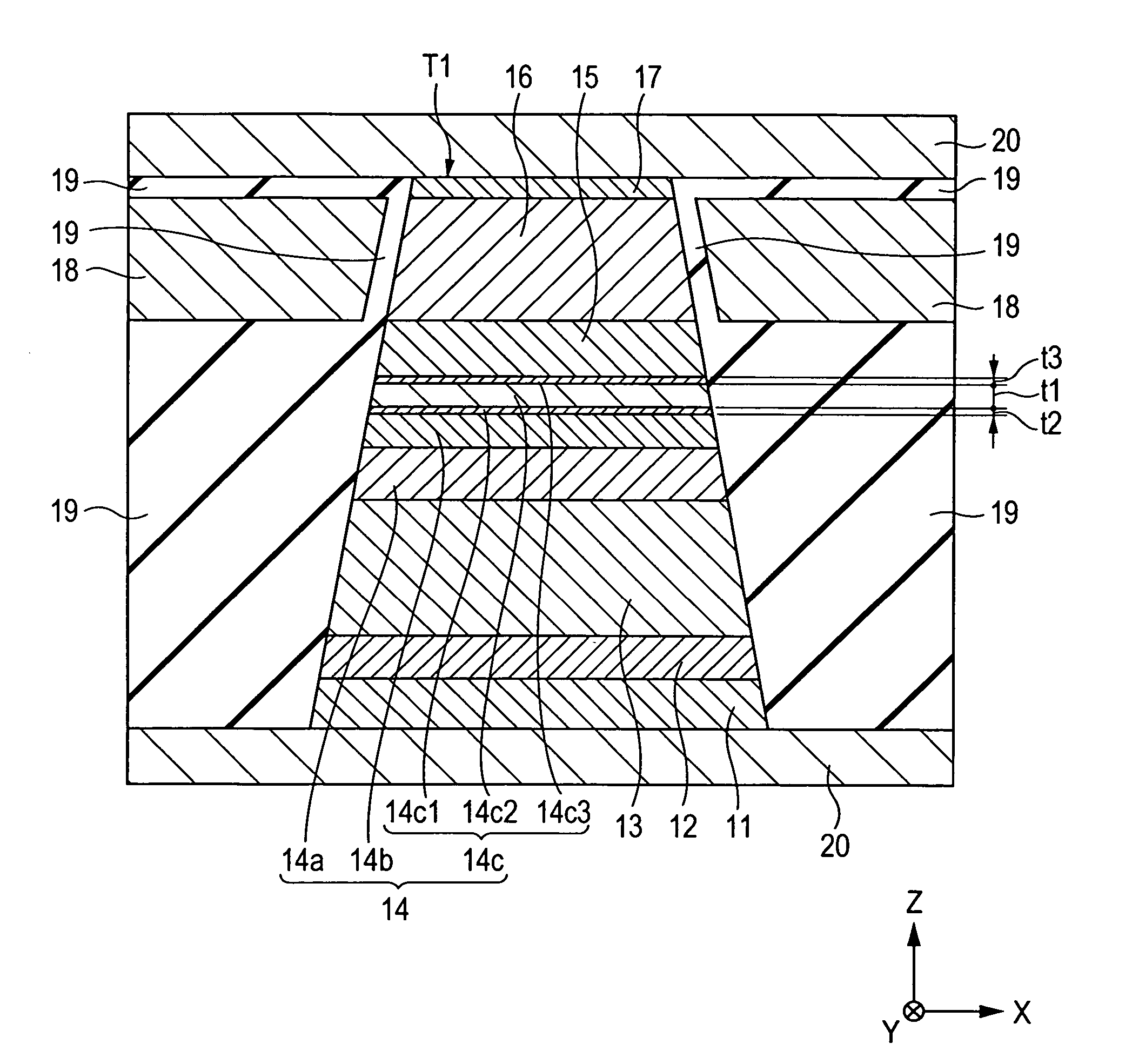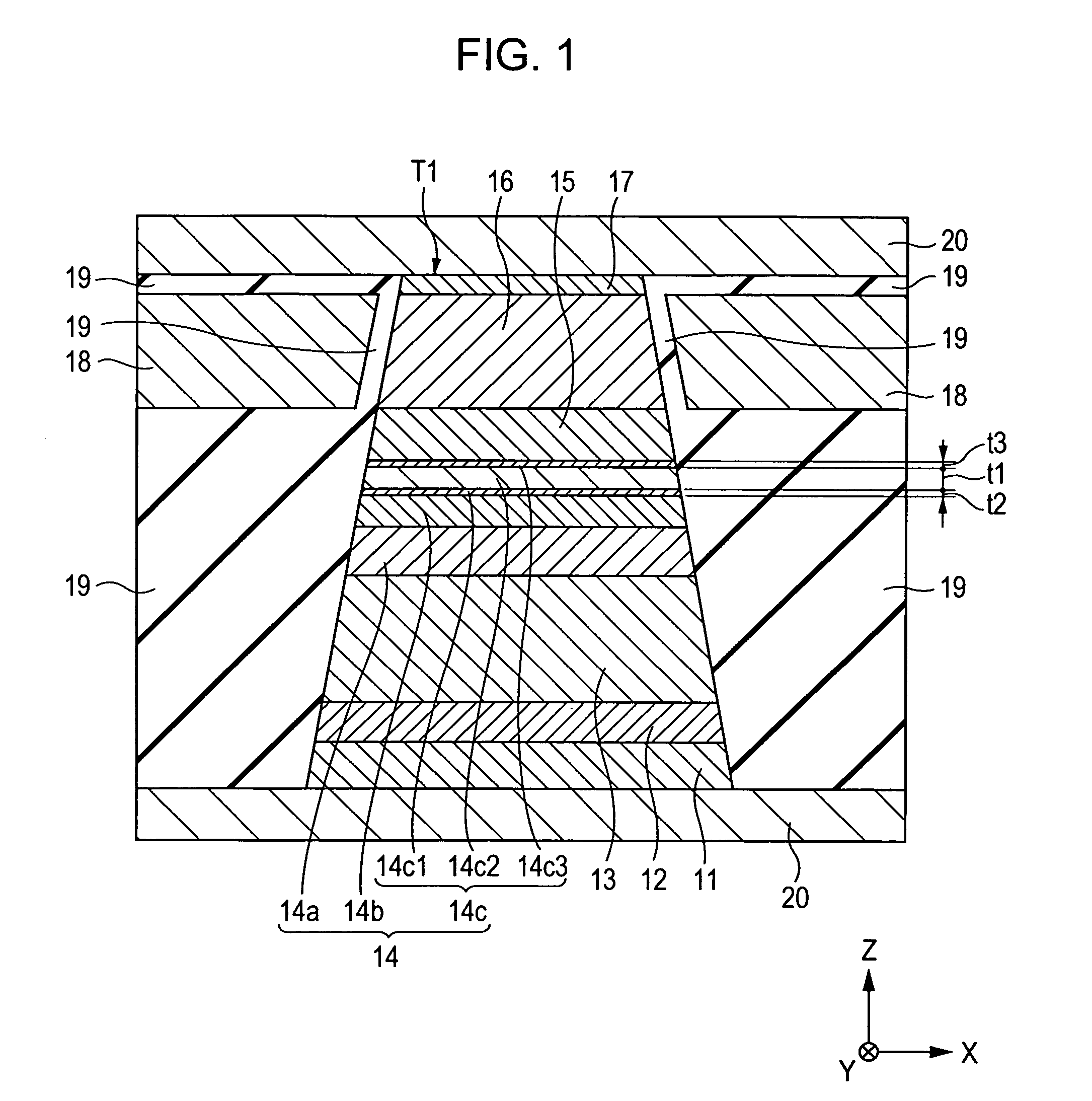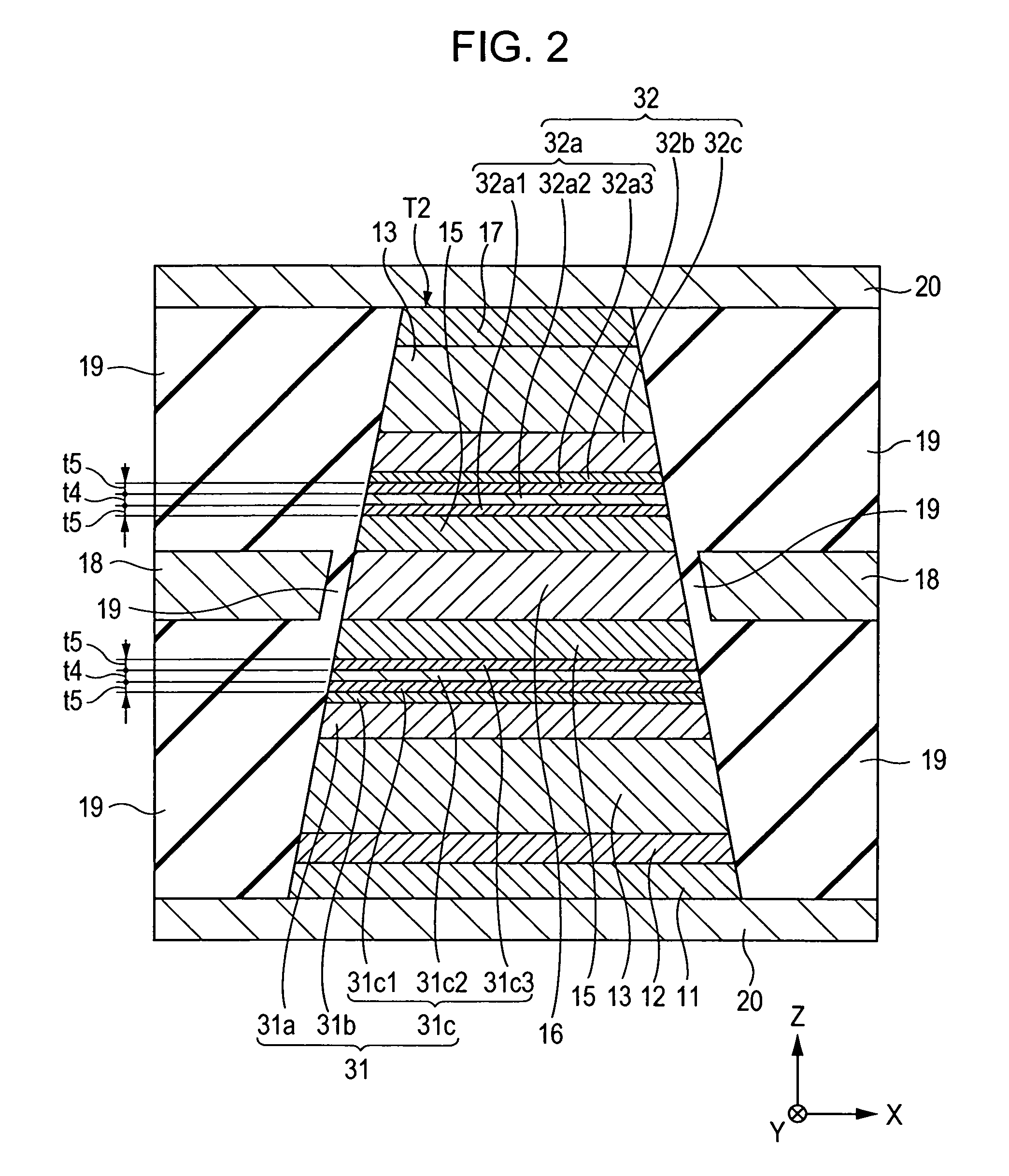Magnetic sensor using NiFe alloy for pinned layer
a magnetic sensor and nife alloy technology, applied in the field of current, can solve the problem of inability to obtain practicable reproduction output, and achieve the effect of increasing the element area of the magnetic sensor, increasing the magnetostrictive constant of the pinned magnetic layer, and increasing the uniaxial anisotropy of the magnetic layer
- Summary
- Abstract
- Description
- Claims
- Application Information
AI Technical Summary
Benefits of technology
Problems solved by technology
Method used
Image
Examples
example 1
[0106]The product ΔR·A of the change ΔR in magnetic resistance and the element area A of a magnetic sensor and the magnetostrictive constant λs of second pinned magnetic layers were investigated. For this investigation, a dual spin valve magnetic sensor having a film structure shown below was formed, and the content of Ni on an atomic percent basis in a NiaFeb alloy (where a and b each indicate atomic percent, and a+b=100 is satisfied) is changed, the NiaFeb alloy being an alloy forming the second pinned magnetic layers (corresponding to the magnetic layers 31c and 32a in FIG. 2). The measurement result of the product ΔR·A and that of the magnetostrictive constant λs are shown in FIGS. 5 and 6, respectively.
[0107]The film structure contained a substrate, underlayer Ta (30 Å), seed layer NiFeCr (50 Å), antiferromagnetic layer IrMn (70 Å), pinned magnetic layer (first pinned magnetic layer Co70Fe30 (30 Å)), nonmagnetic interlayer Ru (9.1 Å), second pinned magnetic layer CoFe (10 Å), N...
PUM
| Property | Measurement | Unit |
|---|---|---|
| magnetization | aaaaa | aaaaa |
| resistance | aaaaa | aaaaa |
| area | aaaaa | aaaaa |
Abstract
Description
Claims
Application Information
 Login to View More
Login to View More - R&D
- Intellectual Property
- Life Sciences
- Materials
- Tech Scout
- Unparalleled Data Quality
- Higher Quality Content
- 60% Fewer Hallucinations
Browse by: Latest US Patents, China's latest patents, Technical Efficacy Thesaurus, Application Domain, Technology Topic, Popular Technical Reports.
© 2025 PatSnap. All rights reserved.Legal|Privacy policy|Modern Slavery Act Transparency Statement|Sitemap|About US| Contact US: help@patsnap.com



